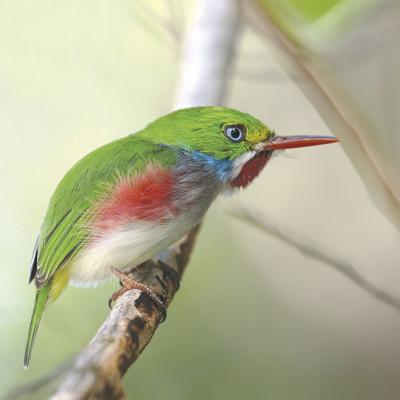“Birds of Cuba: A Photographic Guide by Kirkconnell, Bradley, and Rey-Millett” is a work of art. Expecting a standard field guide, I was impressed with the comprehensive nature of this counsel.
Cuba is home to a broad diversity of avifauna, rich with endemic species, yet a wide range of regional rarities. The archipelago is an important stopover for migrants crossing the Caribbean.
The 384-page book contains 600 color photos and 203 maps, along with excellent coverage of every species on Cuba’s birding list, while concise text provides at a glance information on determining the sex, voice, behavior, and habitat. Every listed account gives a distribution map, along with world ranges and specific status in Cuba.
There are a total of 384 recorded species in Cuba, of which 29 are endemics. 156 species breed on Cuba, 138 Nearctic migrants are regular winter visitors, with 44 exclusively passage migrants, 784 currently considered to be vagrant or accidental, and 16 are summer residents that come to breed and spend our winter in the south.
We receive species geographical information, climate particulars including prevailing wind data, rainfall, and when to expect cold fronts as well as inclement weather, and what part of the island can expect these conditions.
Ecological information briefs upon early avian colonization and endemism, range of vegetation and terrestrial habitat, breeding birds, threatened and restricted endemic species and subspecies. There is detail on molt, spring and fall migration, regular migratory birds, most common winter visitors, and passage migrants. We even receive taxonomic material with the number of subspecies given.
We learn about conservation, where to find and watch Cuban birds, along with a list and description of 41 hotspots and what to expect for specific birds, as well as helpful information for visiting birders.
The best photographs to illustrate the guide and help in identification have been chosen for the finest details to cinch positive recognition on each species. The only thing that has been found to be a little disconcerting is the metric measurement of the birds.
Also, keep in mind that eastern US species sometime travel over the Caribbean and are listed as Cuban subspecies. So we are getting photos on when US birds will be available on the archipelago.
Introduced species breeding on Cuba, those likely to be extinct on the archipelago, a list of endemics, and a quick index is provided, as well as an index of English names.
Since Cuba is so near, writer took liberty to do a manageable outlook on one of my greatest loves, migration. As the archipelago is in the east, migrants tend to use the Caribbean as a stopover.
Many winter as far south as central and northwestern South America, though some individuals will take the land route and head for Mexico to Panama. Studying this guide gives an active version of many eastern North American winter destinations.
The process made it more illustrative. For readers with an interest in Cuban birds, this book will give you everything that is required for a successful trip.























Commented
Sorry, there are no recent results for popular commented articles.